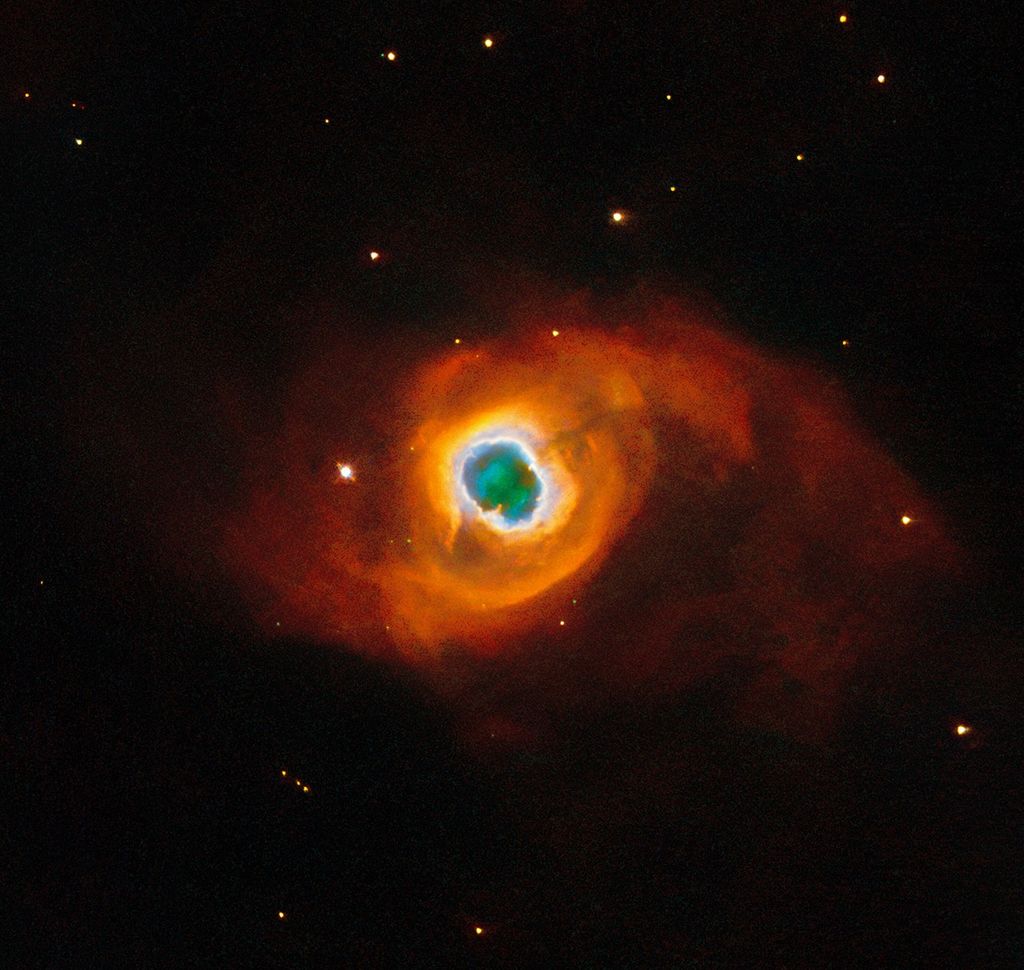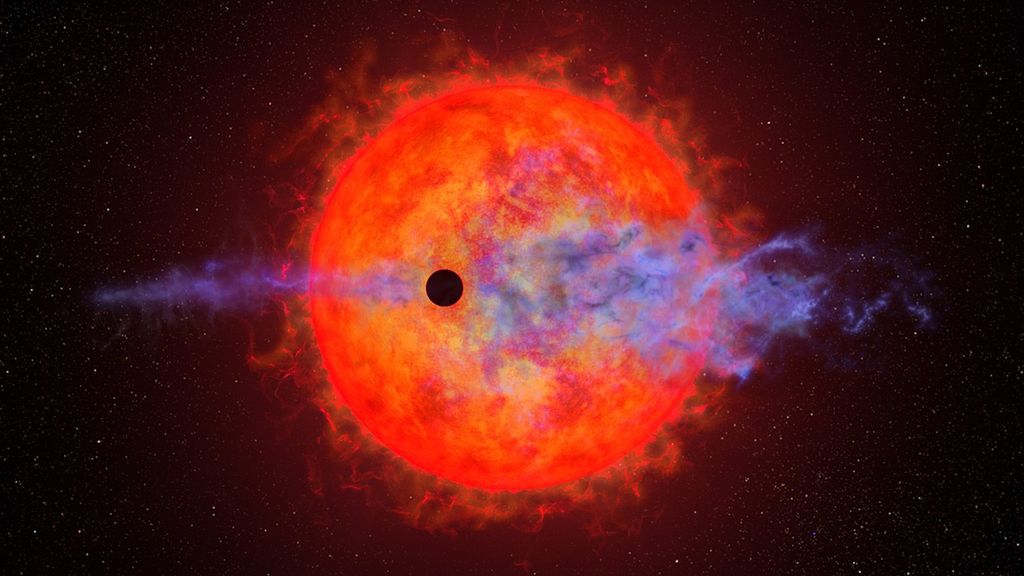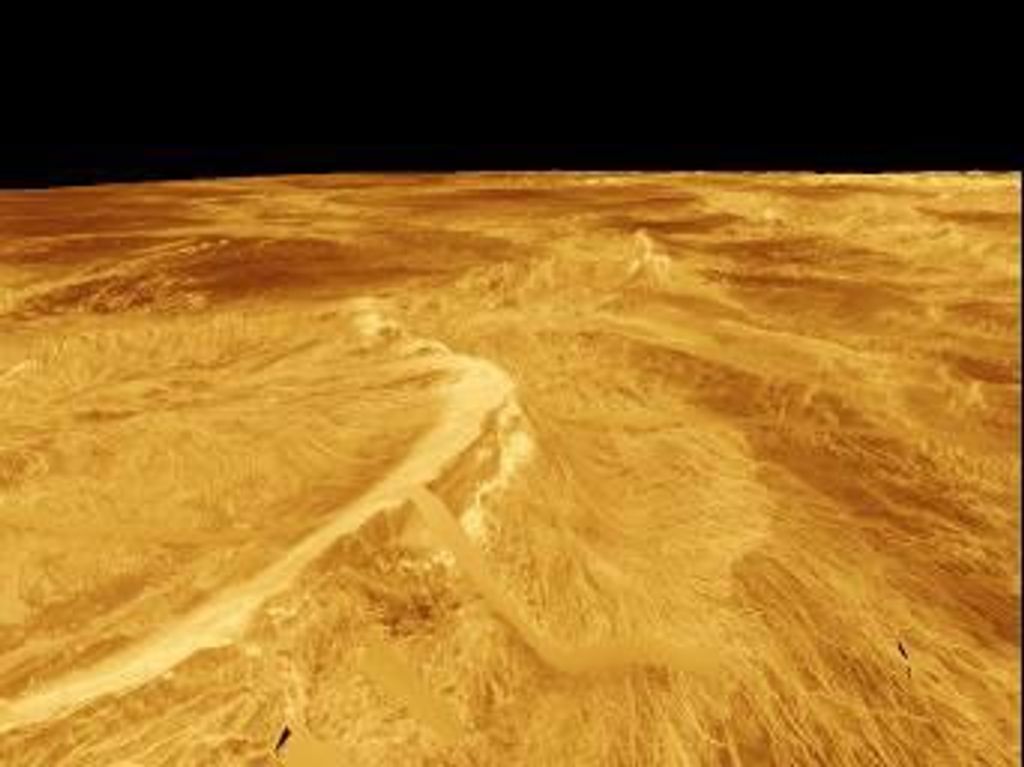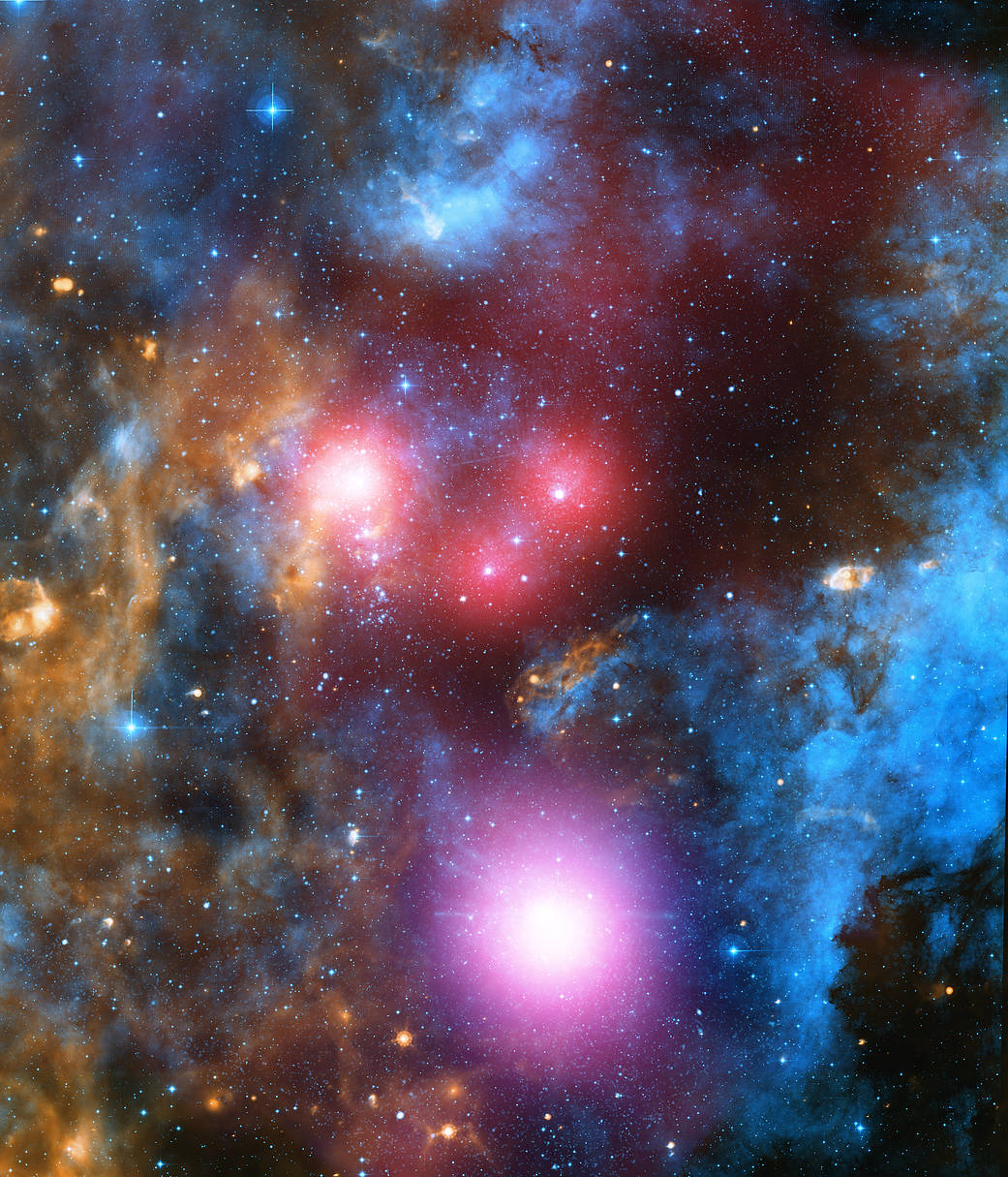Stars come in different sizes and masses. Our Sun is an average-sized star that will have a lifespan of some 10 billion years. More massive stars, like those found in Cygnus OB2, only last a few million years. During their lifetimes, they blast large amounts of high-energy winds into their surroundings. These violent winds can collide or produce shocks in the gas and dust around the stars, depositing large amounts of energy that produce X-ray emission that Chandra can detect.
In this composite image of Cygnus OB2, X-rays from Chandra (red diffuse emission and blue point sources) are shown with optical data from the Isaac Newton Telescope (diffuse emission in light blue) and infrared data from the Spitzer Space Telescope (orange).
Image credit: X-ray: NASA/CXC/SAO/J. Drake et al; H-alpha: Univ. of Hertfordshire/INT/IPHAS; Infrared: NASA/JPL-Caltech/Spitzer
Read Chandra 20th Anniversary feature
View gallery of other 20th Anniversary images
Read more from NASA’s Chandra X-ray Observatory.
For more Chandra images, multimedia and related materials, visit:



























